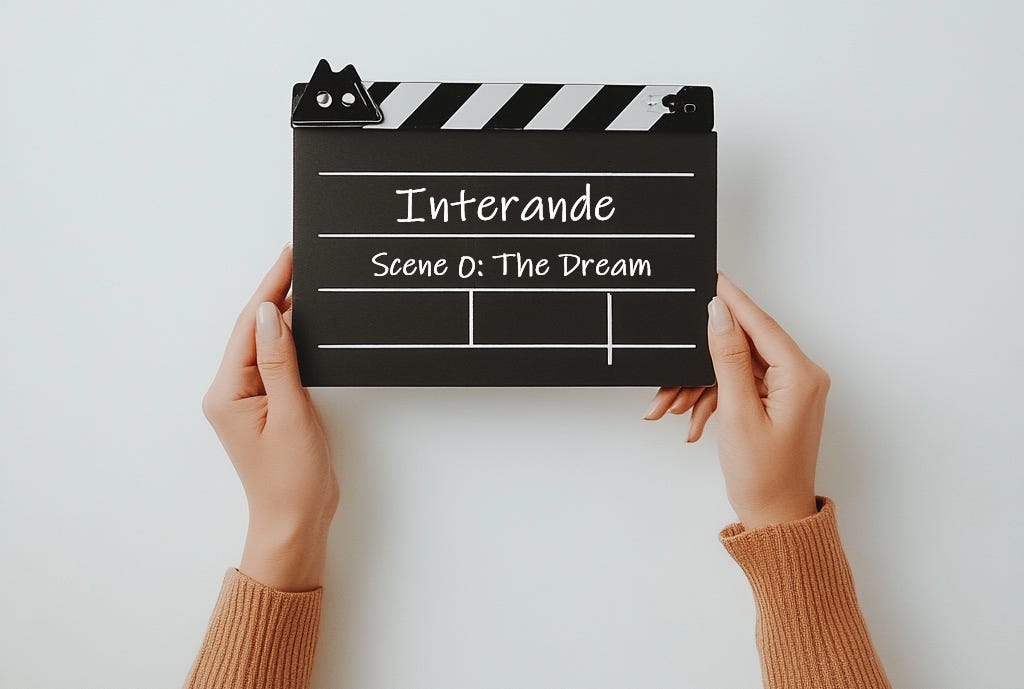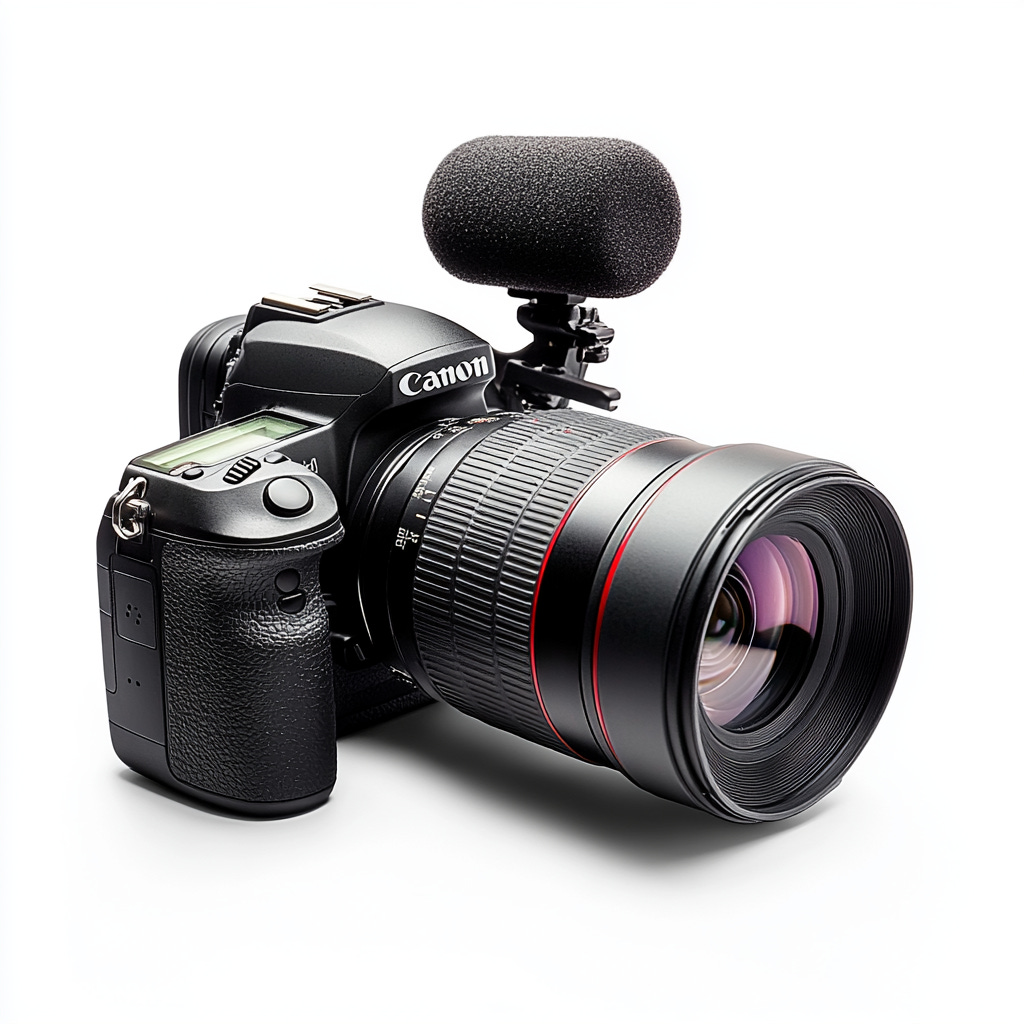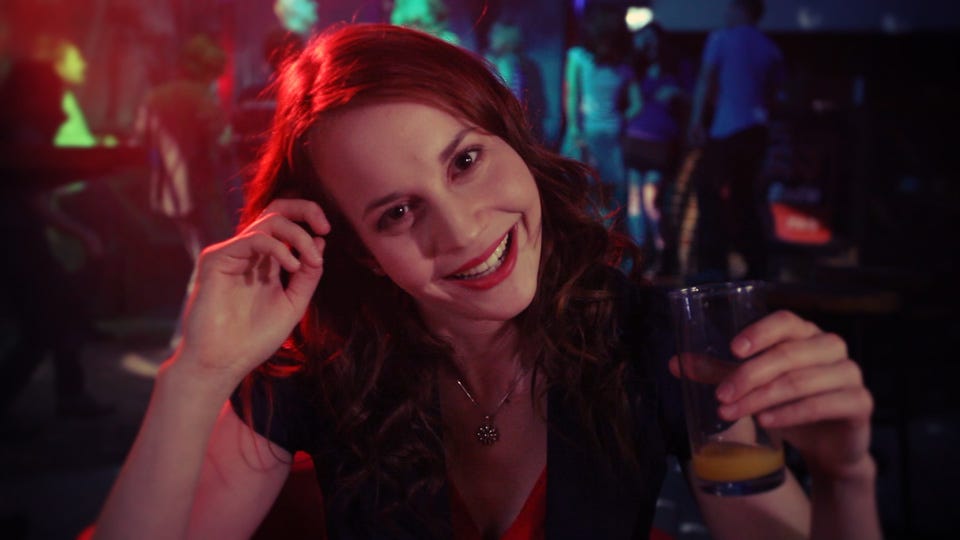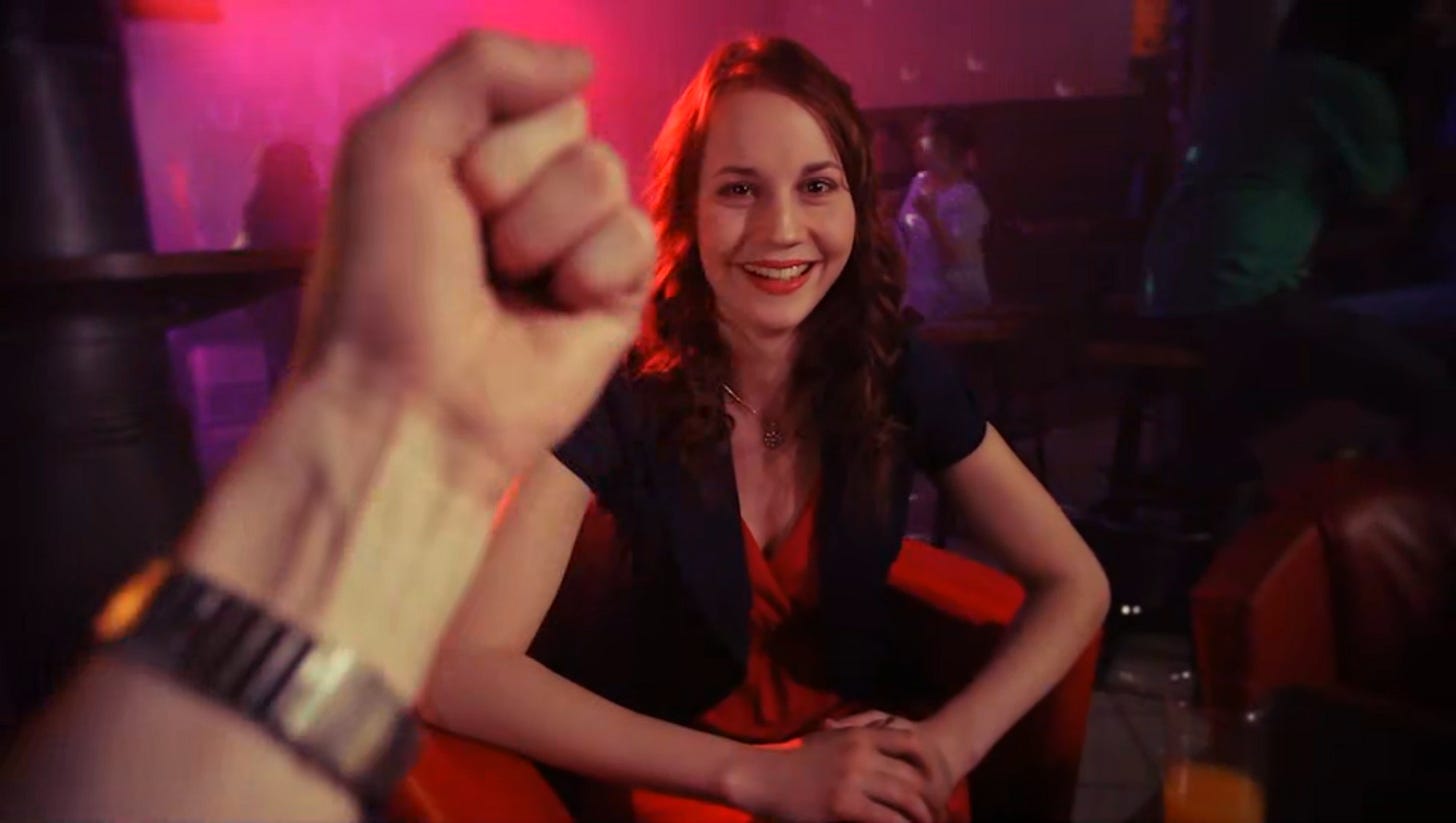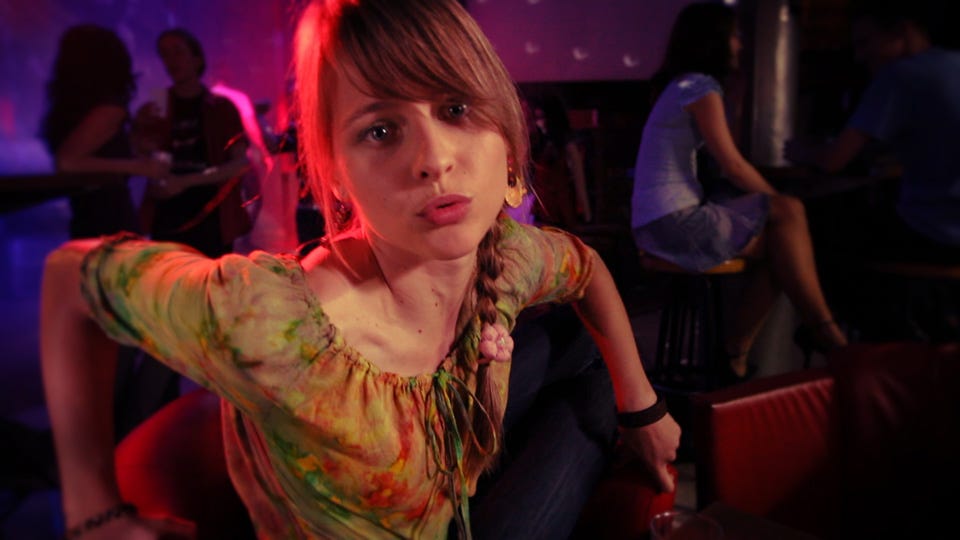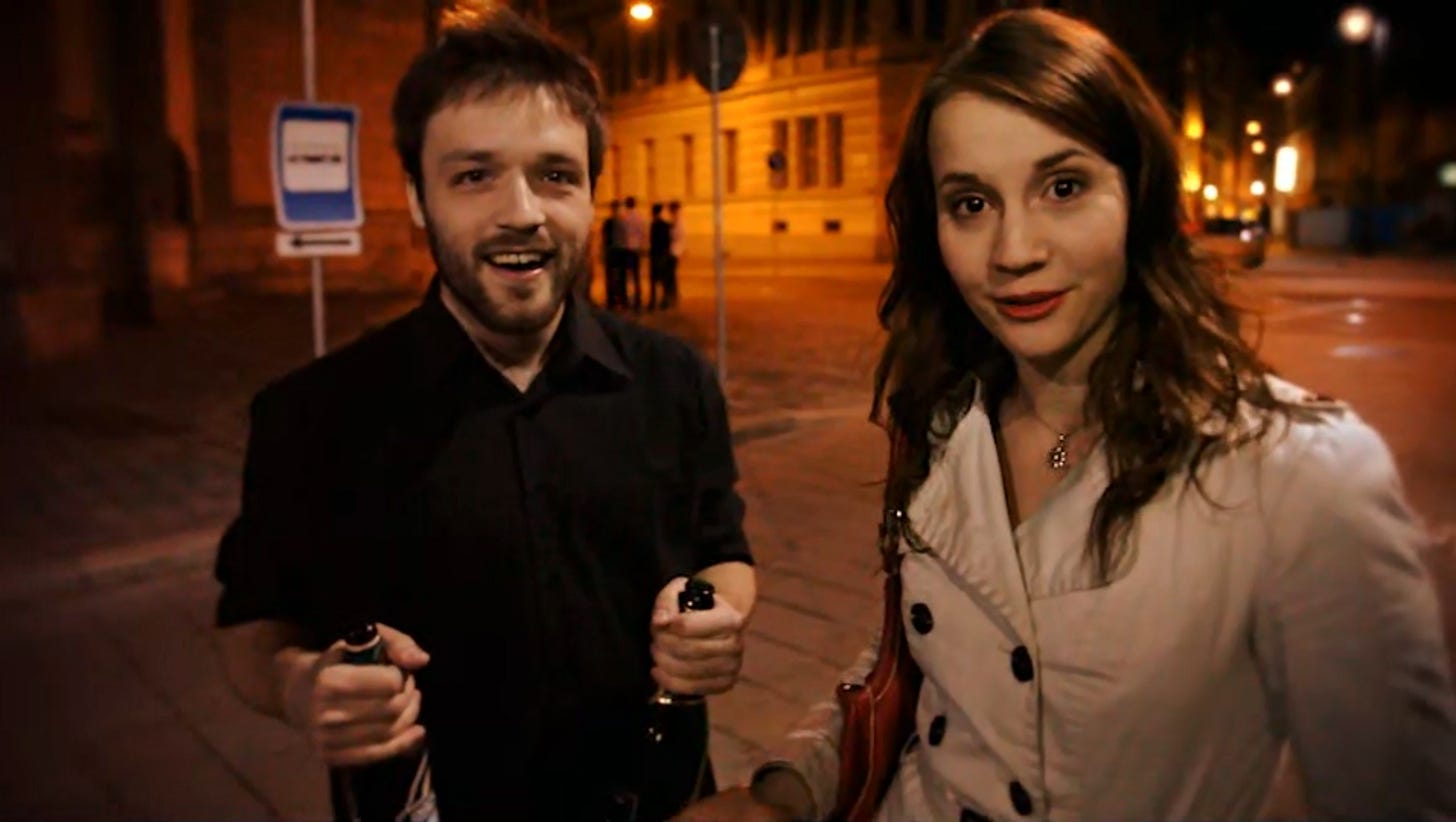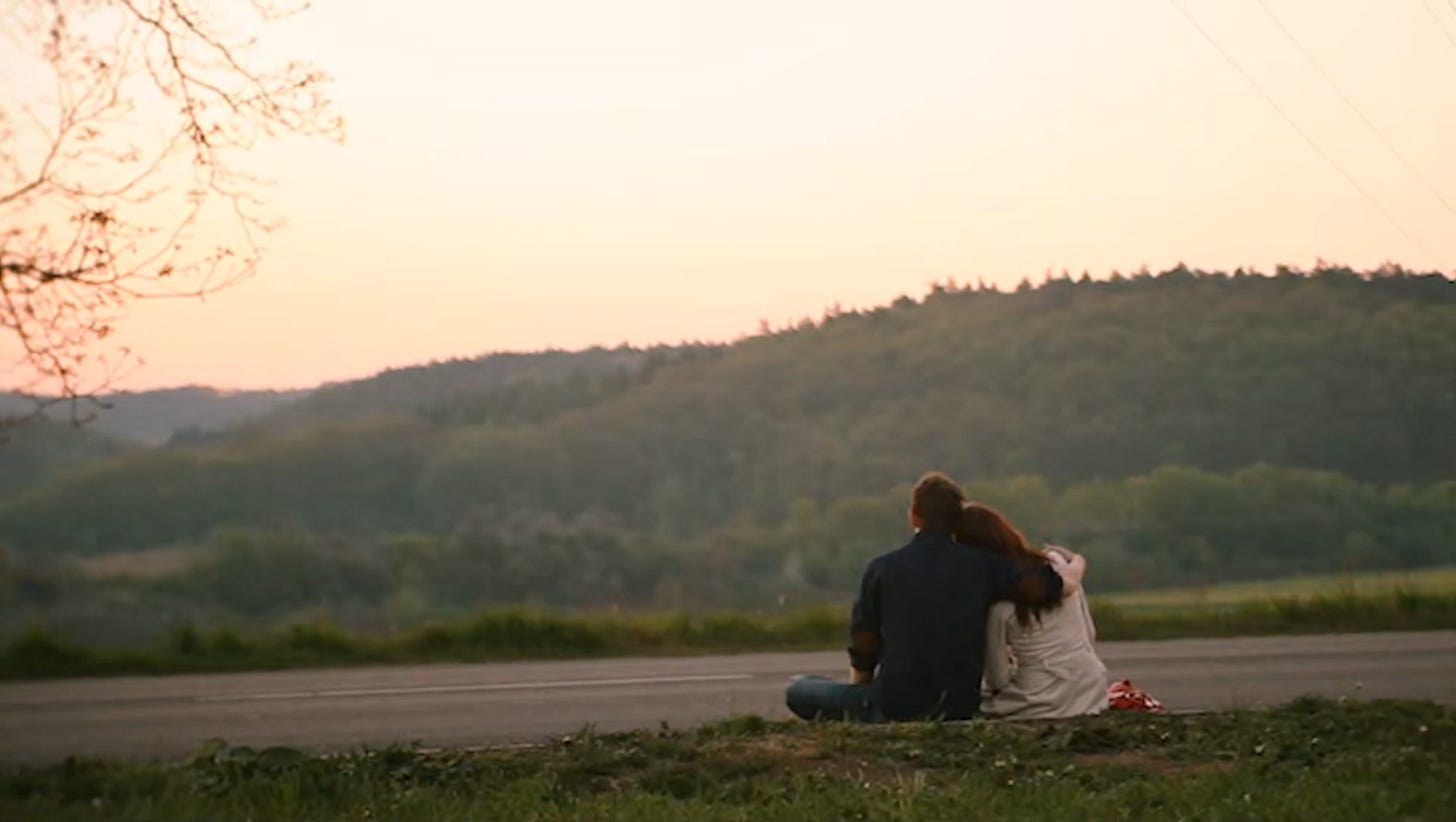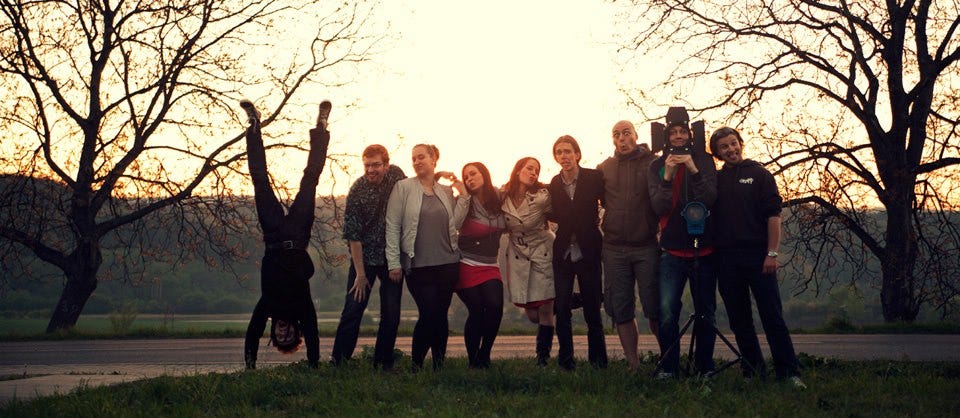What makes an interactive movie actually work?
It’s not just clever code or decent actors—it’s alchemy. A mixture of cinematic craft, compelling choices, strong performances, and a team willing to throw everything into a shared vision.
That alchemy clicked with Interande, which somehow racked up over 2.7 million plays in the Czech and Slovak corners of the internet—a digital pond of just 12 million users at the time. Not bad for a no-budget passion startup held together by duct tape, dreams, and the refusal to quit. Sanity clearly wasn’t our strong suit.
But we were dreamers!
It all began back in 2011, when my friend Matouš Ježek pitched me the idea of creating a new generation of interactive film and testing its potential on modern technology. I knew it would be a purely R&D effort and would require a significant amount of time. But I saw the great potential.
We have known each other since childhood. We shared our love for fantasy, gaming, and technology. We collected gamebooks, explored the magical realms of Dungeons & Dragons, and obsessed over Magic: The Gathering. We studied and lived in the same cities for quite some time. While Matouš continued to pursue a career in game design, I focused on game development.
He brought the idea. I brought the tech. I trusted his experience in storytelling and game design, and he relied on my technical skills to bring it all to life. Our solid shared history and passion for games were the foundation we needed.
At that point, we began discussing the technical options available, the timeline, and how to approach the project in an iterative manner. I will elaborate more on the technical side in the following article.
Matouš had already teamed up with Pavel Gotthard, our screenwriter and executive producer—a true wordsmith who penned a script full of cheeky, memorable lines still quoted today (“Dám ti do toho vodku, aby ti to s ním líp utíkalo / I’ll throw in some vodka to boost the charm levels!”). With a background in dramaturgy and interactive storytelling, Pavel brought both structure and flair.
We now needed someone to shoot the thing.
That’s where Víťa Procházka came in—a meticulous filmmaker who understood that in interactive media, every camera move matters. He choreographed shots with an eye for continuity, knowing that consistency across story branches would make or break the experience.
The Team
Having Pavel, Matouš, and Víťa lead the media side was a turning point. From scripting to shooting alpha test footage for my early prototypes, we worked as one unit.
You can’t simply separate film-making, design, and the in-app experience. They all need to come together, as well as their owners. Filmmakers need to understand the technical possibilities (and limitations) of the technology and prepare the material accordingly. At the same time, software engineering must account for the complexity of the story, game elements, and the limitations of film material.
You already know that the magic of interactive movies is in the thin balance between the quality of the film material and the technology trying to cover up all the imperfections to create an experience as smooth as possible.
And that was my task!
I was finishing my master’s degree and preparing for the final exam, while adding the creation of the interactive player for Interande to my list of leisurely pastimes.
The final result is only as smooth as the teamwork that led to its creation!
The schedule? Six months from sketches to final product. While I had time to iterate on the tech, the film crew had just two days to capture most of the footage.
We had our core team, but we were excited to bring on talented actors and a fantastic crew!
Interande’s premise was straightforward yet captivating: a classic pick-up artist scenario set in a club, where Petr—our protagonist—is trying to impress Dana, a journalist procrastinating on her article due by sunrise. Not the most responsible journalist, perhaps, but a great character to fit a movie that’s easy enough to film, direct, and gamify.
For this purpose, we needed a special variety of actors who grasp the concept and the game dimension of the movie, are passionate enough, and willing to rehearse multple branches of the story, improvise, and deliver under intense pressure, embracing the chaotic energy required to film an interactive adventure within the narrowest of time frames.
All of that with a budget best described as “non-existent.”
⭐ The Star
We considered several actresses for Dana, but after a few test shoots, Barbora Mudrová stood out—a young Czech actress with a bright smile and even brighter presence. Pavel once joked, “She was the first real actress I talked to,” and she turned out to be the perfect choice: grounded, expressive, and game for the improvisation-heavy chaos ahead.
You!
Two days before filming, we lost the original voice for the main character, Petr. Chaos and panic as everything was already scheduled! Pavel made a last-minute call through his university contacts and somehow roped in the elusive Pavel Hýža. You never see his face in the movie, and honestly, finding photos of him even in real life is a challenge.
He wasn’t just the voice. He was the camera. Since we had no headgear, Víťa filmed the POV shots by holding the Canon 5D camera in front of Pavel, occasionally using his body as a stabilizer. And when the camera needed to show Petr’s hands, they were Víťa’s!
Hand gestures (“ruce”) were even treated explicitly in the shooting plan:
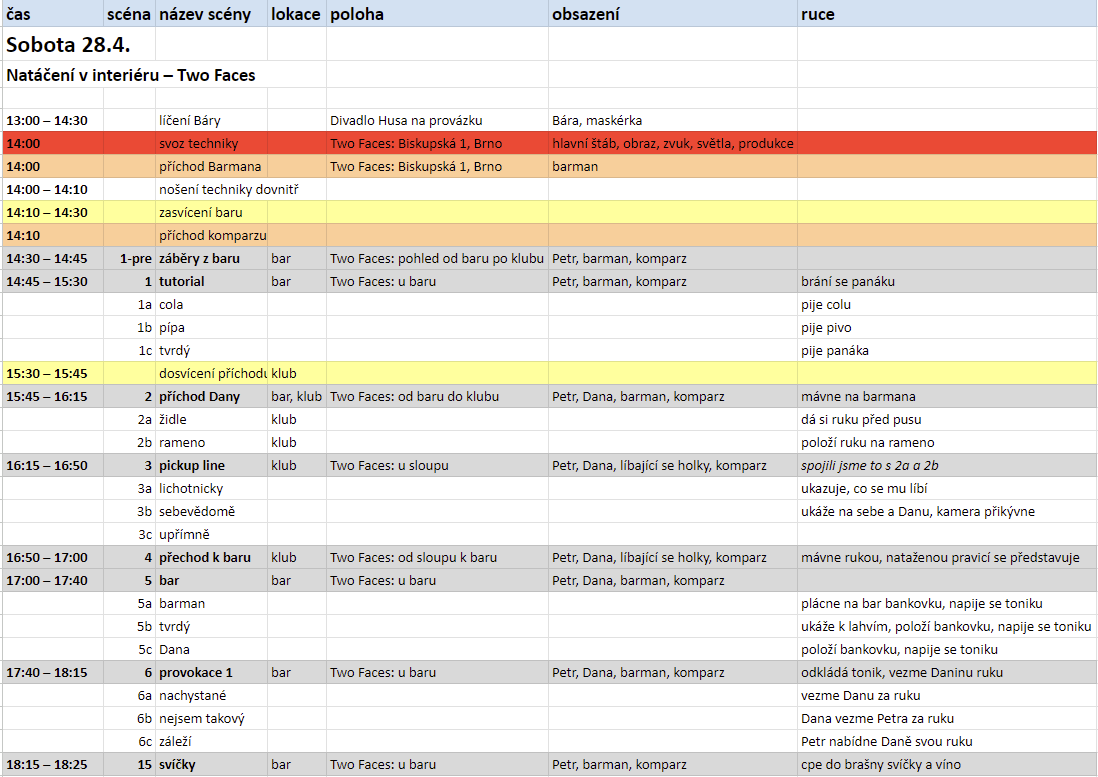
Among our standout supporting cast were memorable figures like bartender Martin Tlapák, Petr’s ex-girlfriend Alžběta Vaculčiaková,
and Dalibor Buš—the drunken friend who later snagged a prestigious Thalia Award.
Not bad for a cast held together by caffeine and good intentions!
The Crew
Then we rallied anyone we could—friends, classmates, girlfriends, strangers from the internet—as extras and testers. But we also needed a real crew: lights, sound, script, makeup, production. That’s when Víťa and Pavel pulled in their networks, and somehow, a whole film crew materialized.
One Night, One City, One Movie
The main interior shoot took place in Brno’s iconic Two Faces club, which generously let us use the space for free. I stopped by to see the chaos and ended up dancing in one of the background scenes.
The pace on stage was fast, and watching Víťa in his element was incredible! Once the club scenes were done, the team moved outside for exteriors, while I returned to my cave to code.
With most footage wrapped, the final challenge was a high-stakes night shoot across Brno.
It kicked off a day later at 7:45 PM in the Husa na provázku Theatre, where Dana sat down for makeup. From there, it was a nonstop race against time. The crew shot through the night, chasing story branches through busy streets and improvised sets. Every scene had to match continuity across multiple outcomes, and every delay risked daylight ruining the shot.
…
It’s early morning on May 1st, 2012, at the bus station somewhere outside the city. The shooting plan explicitly mentions that the sun rises at 05:24 AM to get the final shot.
And so the exhausted crew, fueled only by adrenaline, coffee, and the thrill of creation, captures this last shot in the quiet, awakening outskirts of Brno, Czech Republic. They’ve managed to film the rest of Interande in a single relentless night.
Meanwhile, I’m conspicuously absent from the group photo, asleep at home, preparing to transform their filmed chaos into interactive magic.
Only the easter egg was missing. So we sneaked it in a few days later. Can you guess where it has been filmed?
The answer is in the following video clip!
That’s how Interande was born—and how it was filmed.
If you’re curious how the interactive player worked, what broke, and how the project eventually rose from the dead, subscribe and stay tuned. The following article dives deep into the technical guts of the platform and how we pushed interactive media beyond “just a gimmick.”
Thank you for reading!


